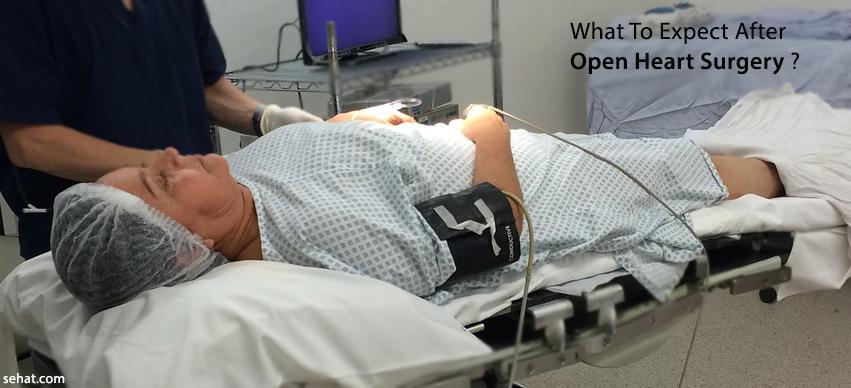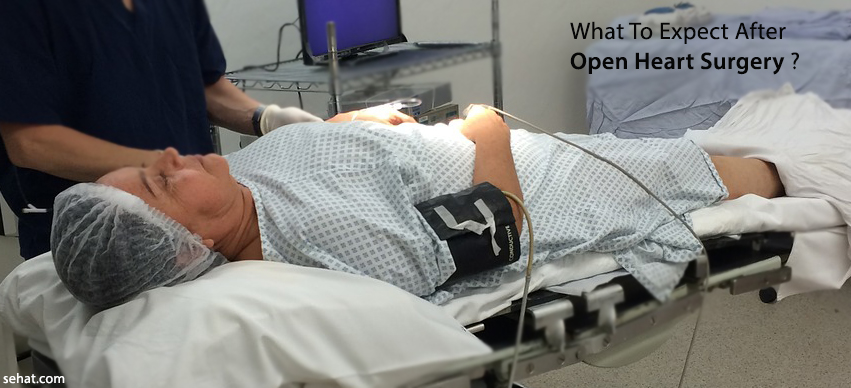
A coronary artery bypass graft surgery patient who has just undergone major open heart surgery will need time to recover and regain his/her strength. Each person's recovery is unique. The recovery will begin in the hospital’s ICU (intensive care unit) and will continue in another room of the hospital for three to five days before going home. After being discharged from the hospital, recovery typically takes six weeks or more.
Once a patient has undergone open heart surgery, the first question asked to the doctor is what is expected after surgery, post-operative care and sleeping positions after open heart surgery.
What To Expect After An Open Heart Surgery?
- After open heart surgery, the patient will be observed closely inside a cardiovascular intensive care unit for a minimum duration of 24 hours.
- Until the patient is fully awake, he/ she will be attached to a ventilator with a tube going through the mouth to the windpipe.
- The patient will be unable to speak because the tube interferes with the functioning of vocal cords.
- Hands of the patient may have to be restrained while being attached to the ventilator to prevent the patient from tugging or pulling at the tubes.
- The patient will also be connected to a monitor which continuously measures vital signs like blood pressure, pulse rate, respiratory rate, and oxygen saturation.
- Two to three small tubes will be placed at the site of open heart surgery which will drain air and blood from the operated area.
- A urinary catheter may also be attached to measure urinary output post surgery.
- 2-3 pacemaker wires will also be present at the lower part of the chest. These are temporary and are removed before being discharged to home.
- Once the physician finds the patient fit enough, the ventilator is detached and the tube will be removed.
- After extubation, the patient will be permitted to drink a restricted amount of water the next day. If drinking water causes vomiting or retching, it has to be stopped immediately.
Once The Patient Is Shifted Out Of The Intensive Care Unit
- The patient will still be under continuous observation but with increased mobility such as sitting in the chair to walking in the hallway under supervision.
- Mobility is encouraged to prevent complications due to prolonged bed rest such as lung congestion and development of clots in legs (deep vein thrombosis – DVT).
- Patients are not advised to move out of the bed unattended.
- Patients are supposed to use an incentive spirometer every hour which helps to clear the lungs of mucus.
- The pacemaker wires will be covered with the help of bandages and will remain for up to 5 days after surgery.
- Sutures are mostly internal and dissolvable. Sometimes, stapler sutures are used which will be removed once approved by the physician. Removing stapler sutures is a relatively painless and quick procedure.
- Patients may complain of slight discomfort or lack of sleep due to the monitors and ventilator sounds. The irritability reduces as soon as mobility increases.
On Discharge To Home
- The patient has advised low sodium, salt-restricted food, and fat-free diet after surgery.
- Suitable exercise and after how long should be discussed with the treating doctor.
- The doctor will prescribe a set of medications which are to be taken as per advice until the next follow up.
- It is advised to not take any additional medications without prior discussion with the treating doctor.
- Regular use of spirometer and deep breathing exercises is encouraged to prevent lung congestion.
- Showering is permitted but does not rub directly over the incisions or sutures. A bathing chair can be used for ease.
- Keep a check on weight and swelling of legs at least 2-3 times in a day.
- Driving a car is not advisable for at least 4-6 weeks after surgery.
- Stop smoking immediately as it not only increases lung congestion and mucus but also reduces blood supply to the heart and other organs.

